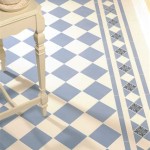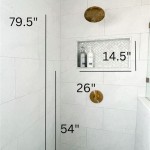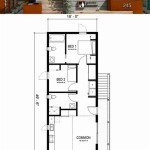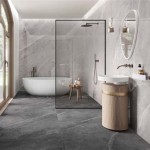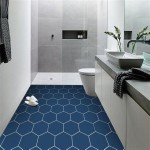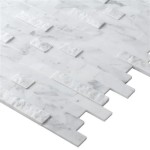Wide Plank Dark Hardwood Flooring: A Comprehensive Overview
Wide plank dark hardwood flooring has become a popular choice for homeowners and designers seeking to imbue spaces with a sense of timeless elegance, sophistication, and visual impact. Far from a fleeting trend, this flooring option offers a unique blend of aesthetic appeal and practical advantages that contribute to its enduring popularity. Understanding the nuances of wide plank dark hardwood, from its material composition to its installation and maintenance, is crucial for making an informed decision that aligns with both budgetary constraints and desired design outcomes.
This article provides a comprehensive overview of wide plank dark hardwood flooring, covering its various aspects and helping to equip readers with the knowledge necessary to determine if it’s the right flooring choice for their specific needs. We will delve into the characteristics that define this type of flooring, exploring the types of wood species commonly used, the different finishes available, and the factors impacting suitability for diverse environments. We will also address the installation process, essential maintenance requirements, and the aesthetic impact of dark hardwood on a room's overall ambiance.
Understanding the Defining Characteristics
Wide plank hardwood flooring is defined, quite simply, by the width of its individual planks. Generally, anything exceeding five inches in width is considered 'wide plank'. Common widths range from 5 to 12 inches, and sometimes even wider planks are available. The increased width reduces the number of seams visible across the floor, creating a more expansive and seamless appearance. Dark hardwood, on the other hand, refers to the color of the wood achieved either through natural staining of darker wood species or through applied stains and finishes.
The combination of wide planks and dark color creates a distinctive aesthetic. The wide planks showcase the natural grain patterns and character markings of the wood to a greater extent than narrow planks, highlighting the wood’s natural beauty. The dark hue adds a touch of drama and sophistication, making it a versatile choice that can complement both modern and traditional interior design styles. The deep color can range from rich browns and chocolates to nearly black shades, allowing for diverse stylistic expressions.
Several factors influence the overall appearance and performance of wide plank dark hardwood. The species of wood used is a primary consideration, as different woods vary in hardness, grain patterns, and natural color. The finish applied to the wood is also crucial, as it determines the level of gloss, durability, and resistance to wear and tear. Furthermore, the installation method can affect the stability and longevity of the flooring, particularly in environments with fluctuating humidity levels.
Exploring Wood Species and Finish Options
The choice of wood species significantly impacts the durability, appearance, and price of wide plank dark hardwood flooring. Hardwood species are generally classified based on their hardness using the Janka hardness scale, which measures the force required to embed a steel ball into the wood. Species with higher Janka ratings are more resistant to dents and scratches.
Popular choices for wide plank dark hardwood include: *
Walnut:
Known for its rich, dark brown color and intricate grain patterns, walnut is a classic choice that exudes warmth and elegance. It is a relatively soft hardwood, but its beauty and character make it a highly desirable option. *Oak:
Oak is a versatile and durable hardwood that is available in both red and white varieties. Red oak has a pinkish hue, while white oak is more beige. Oak can be stained to achieve a wide range of dark colors and is a more affordable option compared to some exotic hardwoods. *Maple:
Maple is a light-colored hardwood with a fine, uniform grain. While naturally light, it can be stained to achieve dark shades. Maple is a very hard and durable wood, making it a good choice for high-traffic areas. *Hickory:
Hickory is one of the hardest and most durable domestic hardwoods. It has a distinctive grain pattern and can be stained to achieve a variety of dark colors. Hickory is an excellent choice for those seeking a floor that can withstand heavy use. *Exotic Hardwoods:
Species such as Brazilian Cherry (also known as Jatoba), Ipe, and Wenge offer unique colors, grain patterns, and exceptional hardness. While often more expensive, these woods can add a distinctive touch to any home.In addition to the wood species, the finish applied to the flooring is a key consideration. Different types of finishes offer varying levels of protection, gloss, and maintenance requirements. Common finish options include: *
Polyurethane:
Polyurethane is a durable and water-resistant finish that is available in a range of sheens, from matte to high-gloss. It provides excellent protection against scratches and stains and is relatively easy to maintain. *Oil-Based Finishes:
Oil-based finishes penetrate the wood, enhancing its natural beauty and providing a warm, matte appearance. They require more frequent maintenance than polyurethane finishes, but they are easier to repair. *Water-Based Finishes:
Water-based finishes are a more environmentally friendly option compared to polyurethane finishes. They are low in VOCs (volatile organic compounds) and dry quickly. *UV-Cured Finishes:
These finishes are cured using ultraviolet light, creating a very hard and durable surface. They are resistant to scratches, stains, and wear and tear, making them a popular choice for high-traffic areas.The choice of finish should be based on the desired aesthetic, the level of traffic in the area, and the homeowner's maintenance preferences. A matte finish will conceal scratches and dents better than a high-gloss finish, while a durable finish like polyurethane is ideal for homes with children or pets.
Installation, Maintenance, and Environmental Considerations
The installation of wide plank dark hardwood flooring requires careful attention to detail and proper preparation. Before installation, the subfloor must be level, clean, and dry. The flooring should be acclimated to the room's humidity and temperature for several days to prevent warping or cupping after installation.
There are several installation methods available: *
Nail-Down Installation:
This method involves nailing the planks directly to the subfloor. It is the most traditional method and is best suited for solid hardwood flooring. *Glue-Down Installation:
This method involves gluing the planks to the subfloor. It is often used with engineered hardwood flooring and provides a very stable and durable installation. *Floating Installation:
This method involves interlocking the planks together and allowing the floor to "float" over the subfloor. It is a relatively easy installation method and is best suited for engineered hardwood flooring.Professional installation is highly recommended to ensure a proper and long-lasting installation. Improper installation can lead to problems such as squeaking, warping, and gapping.
Maintaining wide plank dark hardwood flooring requires regular cleaning and care. Sweep or vacuum the floor regularly to remove dirt and debris. Use a damp mop with a wood floor cleaner to clean spills and stains. Avoid using abrasive cleaners or excessive water, as these can damage the finish. Placing mats at entrances and rugs in high-traffic areas can help to protect the flooring from wear and tear. Periodic refinishing may be necessary to restore the floor's original luster.
From an environmental perspective, choosing sustainably sourced hardwood is essential. Look for certifications from organizations like the Forest Stewardship Council (FSC), which ensure that the wood comes from responsibly managed forests. Consider using reclaimed or salvaged hardwood, which reduces the demand for newly harvested wood. Selecting low-VOC finishes can also minimize the environmental impact of the flooring.
Wide plank dark hardwood flooring offers a beautiful and durable flooring option that can add value and style to any home. By understanding the characteristics, species options, installation methods, and maintenance requirements, homeowners can make an informed decision and enjoy the benefits of this timeless flooring choice for years to come. Careful planning and attention to detail are key to achieving a successful and long-lasting installation. Additionally, environmental considerations should be a crucial factor in the selection process, ensuring that the flooring is sourced sustainably and responsibly.

2 Ways To Create A Dark Wood Floor Carlisle Wide Plank Floors

The Pros And Cons Of Dark Wide Plank Hardwood Floors Floor Supply

Malibu Wide Plank Take Home Sample Pacific Grove French Oak Solid Hardwood Flooring Hm 333268 The
Dark Wood Floors Wide Plank Flooring

Bay View Cohasset Installation Sawyer Mason Wide Plank Tremont

Malibu Wide Plank Half Moon French Oak 3 8 In T X 4 6 W Click Lock Distressed Engineered Hardwood Flooring 19 Sq Ft Case

Wide Plank White Oak Hardwood Flooring Toffee 1850 Circular Sawn

Maple Dark Walnut Wide Plank Flooring Floor Supply

Dark Wood Floors Wide Plank Flooring

Black Walnut Hardwood Flooring Vermont Wide Plank

